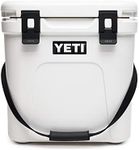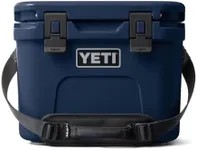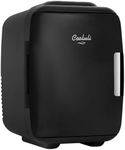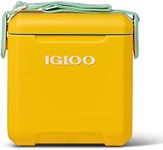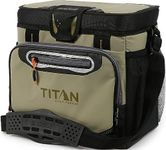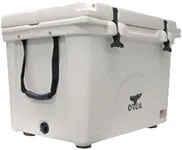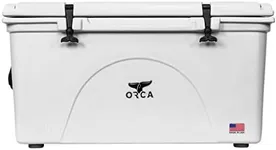Buying Guide for the Best Mini Coolers
When choosing a mini-cooler, it's important to consider your specific needs and how you plan to use the cooler. Mini-coolers are great for keeping drinks and snacks cold in small spaces like dorm rooms, offices, or during travel. To find the best mini-cooler for you, you'll need to look at several key specifications and understand how they impact the cooler's performance and suitability for your needs.CapacityCapacity refers to the amount of space inside the mini-cooler, usually measured in liters or the number of cans it can hold. This is important because it determines how much you can store at one time. Small capacities (up to 6 liters or 6 cans) are ideal for personal use or short trips. Medium capacities (7-15 liters or 7-20 cans) are suitable for small groups or longer trips. Larger capacities (16-30 liters or 21-40 cans) are best for parties or extended use. Choose a capacity based on how much you need to store and how often you'll be using the cooler.
Cooling TechnologyCooling technology refers to the method the mini-cooler uses to keep items cold. The most common types are thermoelectric, compressor, and absorption. Thermoelectric coolers are lightweight and quiet, making them good for small spaces and short-term use, but they may not cool as effectively in very hot environments. Compressor coolers are more powerful and can maintain lower temperatures, even in hot conditions, making them suitable for longer trips or outdoor use. Absorption coolers are versatile and can run on multiple power sources (electricity, gas), but they are generally less efficient. Choose the cooling technology based on where and how you plan to use the cooler.
Power SourceThe power source is how the mini-cooler gets its energy to operate. Common options include AC (wall outlet), DC (car outlet), and battery-powered. AC-powered coolers are great for home or office use where you have access to a wall outlet. DC-powered coolers are ideal for car trips and camping, as they can plug into your vehicle's outlet. Battery-powered coolers offer the most portability and are perfect for outdoor activities where no other power source is available. Consider where you'll be using the cooler most often and choose a power source that matches your needs.
PortabilityPortability refers to how easy it is to move the mini-cooler around. This is influenced by the cooler's size, weight, and design features like handles or wheels. Lightweight and compact coolers are easier to carry and fit into small spaces, making them ideal for travel or personal use. Heavier and larger coolers may offer more capacity but can be harder to move, so they are better suited for stationary use or situations where you won't need to move them often. Think about how often you'll need to transport the cooler and choose one that matches your mobility needs.
Temperature RangeThe temperature range indicates how cold the mini-cooler can get. This is important for ensuring your items stay at the desired temperature. Some coolers can only cool to a certain degree below the ambient temperature, while others can reach specific low temperatures. For keeping drinks and snacks cool, a moderate temperature range (down to around 40°F or 4°C) is usually sufficient. If you need to store perishable items or want to use the cooler as a mini-fridge, look for a cooler with a wider and lower temperature range. Consider what you'll be storing and choose a temperature range that meets those needs.
